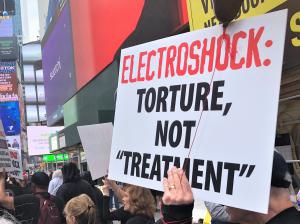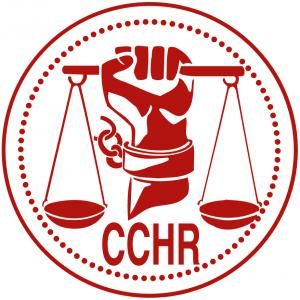CCHR Says Psychiatrists Got it Wrong on Electroshock ‘Treatment’ in Wall Street Journal

With no clinical trials proving its safety, electroshock treatment plays Russian roulette with the lives of vulnerable people who are often ill-informed about its long-term effects including brain damage as well as severe memory loss.
Psychiatrists’ misleading claims could deny consumers facts about ECT damage, inducing suicide.
This was not reported, yet had the inquests, lawsuits and studies upon which the statement was made been researched, the information that electroshock-doctors provided to the WJS could have been refuted, giving consumers and their families some necessary warnings.
The article included the usual disclaimers that although ECT “still causes memory loss” newer technology reduces this. However, experts say this is inaccurate, ignoring serious adverse events, including brain damage, which can be permanent. And rather than prevent suicide, ECT can induce it. That would have been important information for readers to know.
• A UK coroner investigating the death of a mother in 2016 found that the ECT she’d been administered had led to a “deterioration in her mental health...culminating in her decision to commit suicide.” [1]
• A coroner’s inquest in Australia in 2017 determined that involuntary ECT did not prevent but may have led to a patient’s death after a suicide attempt. [2]
• UK researchers recently reviewed more than 90 ECT studies since 2010 and determined: “There is still no evidence that ECT is more effective than placebo for depression reduction or suicide prevention.” [3]
Psychiatrists’ other statements included that ECT is somehow less risky today because of shorter pulses of electricity, electrode placement and advances in technique. It was also theorized that ECT helps to “realign disrupted circuits,” without citing evidence proving this.
However, Kenneth Castleman, Ph.D., says: “The opinion of ‘authorities in the field’ is being substituted for scientific fact.” Castleman has a Bachelor and Master’s degrees in electrical engineering and a Ph.D. in Biomedical Engineering. The latter involves application of engineering techniques to problems in medicine and biology. His entire professional career has been dedicated to scientific research and technology development. He has served on various university and government advisory committees and was a Senior Scientist at NASA for 15 years. He says newer ECT procedures do not reduce the damage:
• In ECT, the voltage is as high as 460 volts and creates an electric field inside the patient’s skull. This field puts a force on the electrons inside the brain, causing them to move. This movement of electrons is a current flow of up to 900 mill amperes. By contrast, brain cells normally operate with less than one-half of a volt and a fraction of one milliamp ere. [4]
• Two things happen when an electric current flows through the brain: Electrical energy is converted into heat inside the brain, raising its temperature. If the temperature gets too high the cells will suffer temporary injury, permanent damage, or death.
• The second effect results from the pulsing nature of the voltage applied by ECT machines. This process of alternately pulling and tugging on the cell membrane creates a jackhammer effect that can tear holes in cell walls. This process is called “electroporation,” the creation of pores (holes) in the cell wall by electrical means. [5] As little as one volt across the cell membrane can open holes. Today’s Modern Brief-Pulse and Ultrabrief Pulse ECT devices are much more likely to cause electroporation than those used in the past.
• The amount of electric current that an ECT machine puts through a patient’s head is approximately 100 times what Tasers, cattle prods, and electric fences use, about the same as what is used for stunning pigs, and roughly one-fifth as much as the electric chair. The 460 volts applied to the head is about 400 times what is required to damage a single brain cell. Clearly this amount of electricity has the potential to cause injury to the brain.
Yet despite this potential damage, psychiatrists boast how studies have been conducted to treat the symptoms of dementia, such as aggression and agitation in vulnerable elderly. There was no questioning about the ethics and rationale behind the Food and Drug Administration’s decision last December to lower the risk classification of the ECT device to moderate-risk Class II risk for three disorders that does not include dementia.
Rather, ECT is projected as safe (without clinical trials) for so-called “treatment-resistant depression,” an arbitrary—not medically or scientifically-based—term to obscure treatment failures, CCHR says.
About CCHR: Initially established by the Church of Scientology and renowned psychiatrist Dr. Thomas Szasz in 1969, CCHR’s mission is to eradicate abuses committed under the guise of mental health and enact patient and consumer protections. L. Ron Hubbard, founder of Scientology, first brought psychiatric imprisonment to wide public notice: “Thousands and thousands are seized without process of law, every week, over the ‘free world’ tortured, castrated, killed. All in the name of ‘mental health,’” he wrote in March 1969. For more information visit www.cchrflorida.org
References: https://www.cchrflorida.org/cchr-says-psychiatrists-got-it-wrong-on-electroshock-treatment-in-wall-street-journal/
Diane Stein
Citizens Commission on Human Rights of Florida
+1 727-480-5035
email us here
Visit us on social media:
Facebook
Twitter
LinkedIn
Electroconvulsive "Therapy" —The Facts about ECT
Legal Disclaimer:
EIN Presswire provides this news content "as is" without warranty of any kind. We do not accept any responsibility or liability for the accuracy, content, images, videos, licenses, completeness, legality, or reliability of the information contained in this article. If you have any complaints or copyright issues related to this article, kindly contact the author above.


